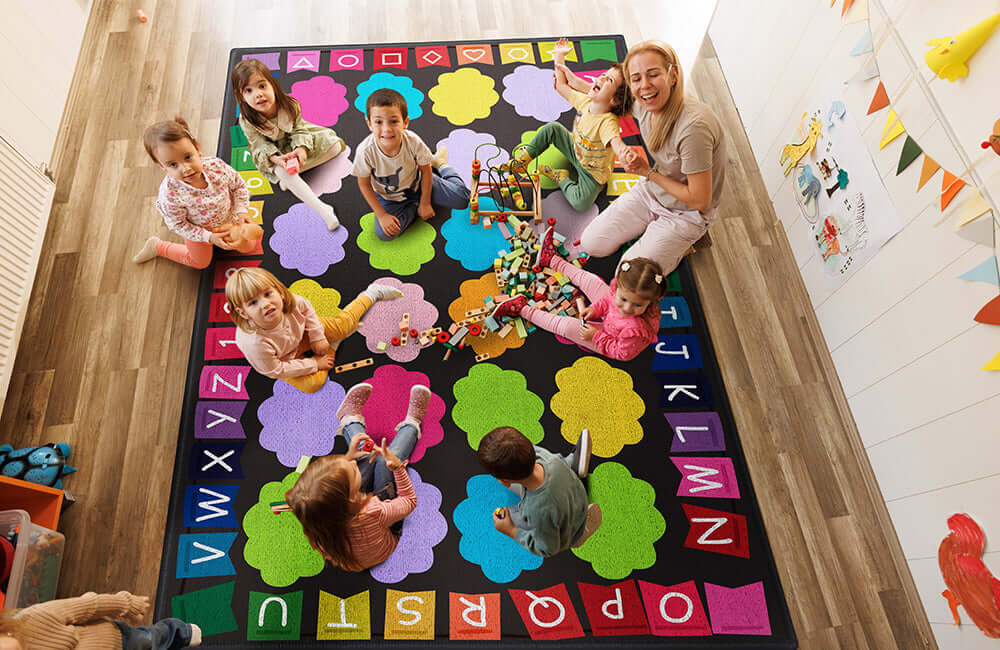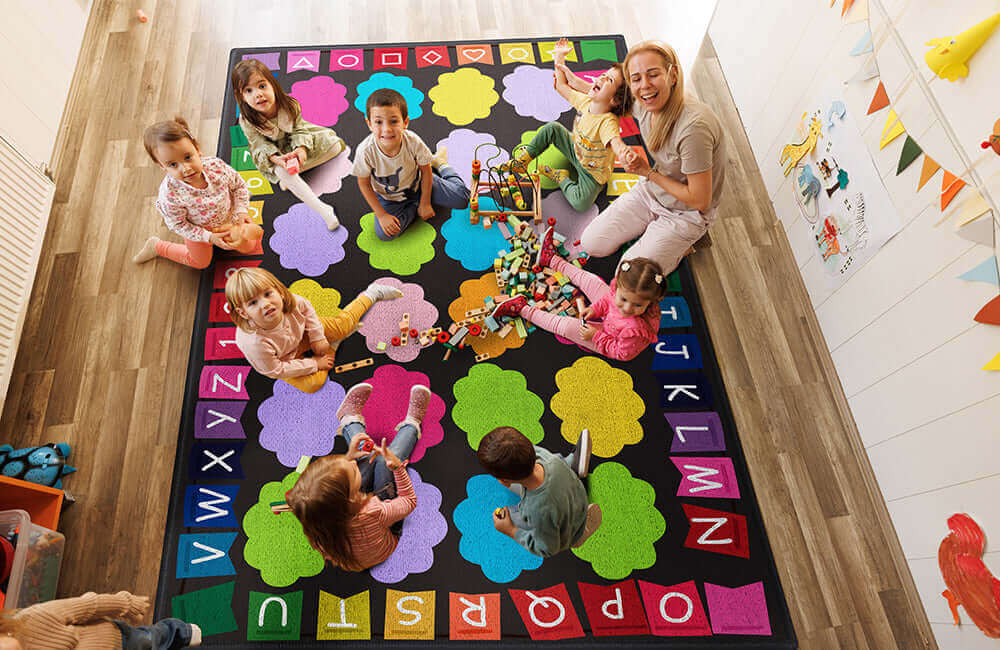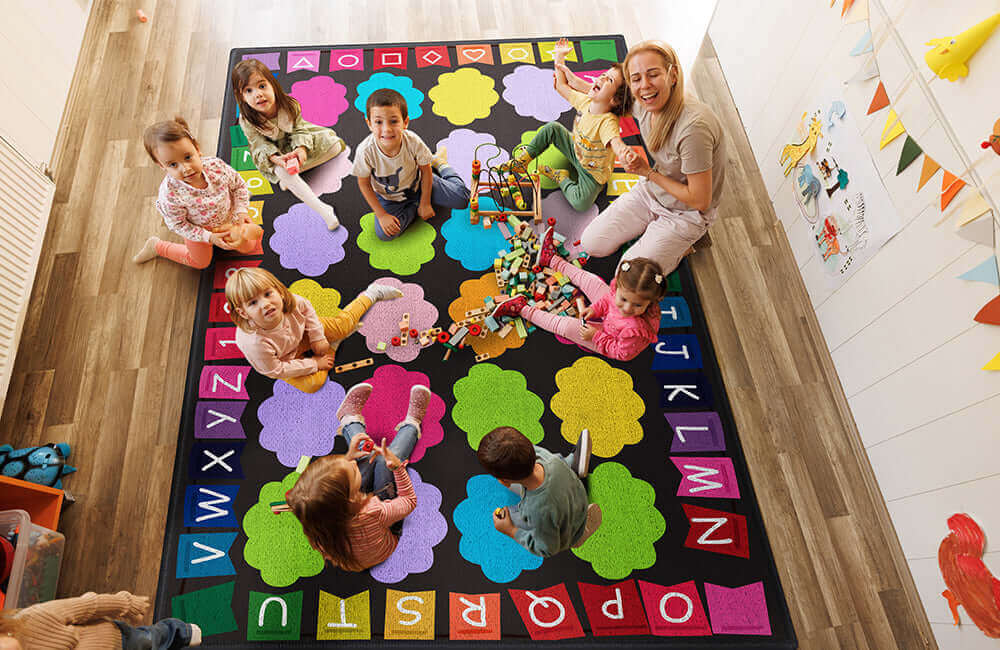The Space Utilization Challenge
Modern educators face unprecedented space constraints that impact instructional choices:
Evolving Classroom Demands
Today's learning environments must accommodate:
- Multiple instructional groupings throughout the day
- Diverse learning modalities and accessibility needs
- Technology integration alongside traditional methods
- Collaborative and independent learning opportunities
- Cross-curricular connections and project-based approaches
Physical Constraints
These demands must function within:
- Static classroom dimensions rarely designed for flexibility
- Increasing class sizes in many districts
- Requirements for specialized learning zones
- Safety and accessibility compliance needs
- Limited budgets for environmental modifications
According to Edutopia's research on learning spaces, "The most effective learning environments incorporate flexibility that allows rapid transitions between instructional modes—a challenge when square footage remains constant while educational approaches evolve."
Essential Characteristics of Multi-Purpose Rugs
Not all classroom rugs offer equal versatility. The most adaptable options share specific characteristics:
Design Elements
Look for rugs featuring:
- Clean, Open Central Spaces: Large blank areas that adapt to varied activities
- Minimal but Strategic Border Elements: Support organization without overwhelming the design
- Subdued Background Patterns: Create visual interest without dictating specific uses
- Versatile Grid Systems: Can be repurposed across subject areas
- Multi-Interpretable Visual Elements: Serve different functions in different contexts
Material Considerations
Prioritize construction that offers:
- Durability for Varied Activities: Withstands both sedentary and active uses
- Appropriate Pile Height: Balances comfort with practicality for multiple functions
- Stain Resistance: Accommodates potential art, science, or sensory activities
- Clear Visual Boundaries: Defines the space regardless of surrounding furniture
- Appropriate Sizing: Accommodates both whole class and small group configurations
Practical Features
Consider functionality through:
- Ability to Layer Additional Materials: Accommodates overlays for specialized activities
- Non-Directional Design: Functions appropriately from multiple viewing angles
- Neutral Color Base: Creates adaptable backdrop for additional teaching tools
- Non-Distracting Patterns: Supports focus on varied learning activities
- Easily Identifiable Boundaries: Helps students recognize activity zones
For specialized multi-purpose options, explore our Versatile Classroom Rug Collection.
Core Academic Applications
A well-designed multi-purpose rug supports fundamental academic content across subject areas:
Literacy Connections
Transform your rug into:
- Flexible Reading Circle: Transforming a designated reading rug using portable book bins and cushions
- Word Study Laboratory: With manipulable letter tiles or cards
- Storytelling Stage: Defined space for oral language development
- Authors' Circle: Collaborative writing and peer editing zone
- Reading Response Center: Discussion space for literature exploration
Mathematical Applications
Repurpose the same space for:
- Number Line Activities: Using temporary or removable markers
- Geometric Exploration: Investigating shapes and spatial relationships
- Measurement Activities: Using the expansive dimensions of large classroom rugs themselves for estimation and measurement tasks
- Data Collection Zone: Organizing and sorting manipulatives
- Problem-Solving Arena: Collaborative mathematical thinking
Scientific Investigations
Adapt your rug area for:
- Classification Activities: Sorting and categorizing within defined space
- Observation Stations: Centralized material examination
- Prediction Centers: Hypothesis development and testing
- Modelling Zone: Creating physical representations of scientific concepts
- Documentation Space: Recording observations and conclusions
The Association for Supervision and Curriculum Development notes that "physical spaces that adapt to multiple instructional purposes facilitate deeper conceptual connections across subject areas."
Social-Emotional Learning Opportunities
Beyond academics, versatile rug spaces support crucial social-emotional development:
Community Building
Utilize your rug for:
- Morning Meeting Circles: Building classroom community on structured classroom seating rugs where everyone has a spot
- Conflict Resolution Zones: Designated spaces for problem-solving
- Celebration Gatherings: Acknowledging achievements and milestones
- Class Council Meetings: Student-led community discussions
- Restorative Circles: Addressing classroom challenges constructively
Self-Regulation Development
Transform the space into:
- Mindfulness Practice Area: Guided breathing and centering activities
- Emotional Vocabulary Building: Using physical positioning to explore feelings
- Personal Space Practice: Learning appropriate boundaries
- Calm Down Corner: When positioned on soft pastel classroom rugs with supporting materials
- Goal Setting Circle: Visualization and planning activities
Collaborative Skill Building
Repurpose for:
- Partner Work Stations: Clearly defined collaborative spaces
- Group Challenge Zones: Problem-solving within physical boundaries
- Role-Play Areas: Practicing social scenarios
- Feedback Circles: Structured peer response activities
- Team-Building Spaces: Cooperative games and challenges
According to Education Week, "Designated physical spaces for social-emotional learning activities significantly increase student engagement with SEL concepts, particularly when these spaces serve multiple functions within the classroom community."
Our Social-Emotional Learning Environment Guide offers additional strategies for maximizing rug spaces for emotional development.
Physical Development Applications
Classroom rugs can support essential physical development when thoughtfully implemented:
Movement Integration
Adapt your rug for:
- Brain Break Zones: Designated space for movement activities on durable colorful classroom rugs
- Action Story Stages: Combining literacy with physical expression
- Dance Exploration Platforms: Movement within defined boundaries
- Exercise Stations: Guided movement activities in limited space
- Mime and Movement Expression: Creative physical communication
Fine Motor Development
Utilize the boundaries for:
- Manipulative Material Containment: Keeping small items within defined areas
- Finger Gym Activities: Stationed within the carpet boundaries
- Handwriting Without Tears® Zones: Using the carpet for body awareness activities
- Origami and Paper Folding Spaces: Clear boundaries for material organization
- Lacing and Stringing Centers: Containing materials within set parameters
Sensory Integration
Transform the space for:
- Proprioceptive Activities: Body awareness within defined space
- Visual Tracking Exercises: Following patterns or movements across the rug
- Vestibular Exploration: Gentle balance activities within safe boundaries
- Tactile Discrimination Centers: Exploring textures and sensations
- Bilateral Coordination Practice: Cross-midline activities in defined areas
As noted in Wikipedia's article on classroom physical activity, "Designated spaces for movement within the classroom environment significantly increase teacher implementation of physical activity integration throughout the instructional day."
Cross-Curricular Integration Strategies
The greatest power of multi-purpose rugs emerges through cross-curricular applications:
Thematic Learning Centers
Adapt your rug area to become:
- Archaeological Dig Sites: History and science integration
- Mapping Explorations: Geography across the curriculum
- Cultural Exploration Zones: Global studies with multiple connections
- Literary Landscape Investigations: Connecting text to geography and history
- Scientific Storytelling Centers: Narrative approaches to scientific concepts
Project-Based Learning Hubs
Transform the space into:
- Design Thinking Workshops: Multi-stage project development
- Research Headquarters: Collaborative investigation centers
- Presentation Preparation Areas: Organizing project components
- Documentation Studios: Recording project progress
- Reflection Circles: Processing learning from projects
Arts Integration Platforms
Repurpose your rug for:
- Visual Arts Studios: Contained creative spaces utilizing stylish boho classroom rugs as aesthetic foundations
- Dramatic Interpretation Zones: Literature through performance
- Music Response Areas: Physical representation of musical concepts
- Dance Notation Studios: Recording movement on temporary surfaces
- Multi-Media Planning Centers: Integrating various artistic expressions
The Kennedy Center's Arts Integration Network emphasizes that "flexible physical spaces that support multiple curricular applications facilitate deeper arts integration and cross-disciplinary connections."
For implementation strategies, visit our Cross-Curricular Learning Environments resource center.
Adapting Usage Across Grade Levels
Multi-purpose rugs can evolve in function across developmental stages:
Early Childhood Applications
For PreK-K students, utilize the rug for:
- Sensory Story Times: Combining literacy with sensory experiences
- Pattern Block Exploration: Contained mathematical discovery
- Circle Song Activities: Music and movement in defined space
- Nature Collection Sorting: Science within boundaries
- Dramatic Play Stages: Imagination within defined areas
Primary Grade Adaptations
For grades 1-3, transform the space for:
- Word Work Centers: Manipulating phonics and spelling patterns
- Problem-Solving Zones: Collaborative mathematical thinking
- Science Observation Stations: Focused investigation areas
- Partner Reading Nooks: When supplemented with simple cushions
- Project Planning Headquarters: Organizing multi-step activities
Upper Elementary Evolution
For grades 4-5, adapt the same rug for:
- Literature Circle Discussions: Text analysis and interpretation
- Mathematical Modeling Centers: Abstract concepts in physical space
- Scientific Debate Arenas: Evidence-based discussion zones
- Historical Reenactment Stages: Bringing primary sources to life
- Media Analysis Laboratories: Examining multiple information sources
According to Scholastic's Classroom Solutions, "The most effective classroom resources evolve in application as students develop, with versatile floor spaces offering particularly strong adaptability across grade levels."
Implementation and Management Tips
Maximizing a multi-purpose rug's potential requires thoughtful systems:
Transition Strategies
Establish efficient:
- Visual Cues for Function Changes: Signals for rug's current purpose
- Material Storage Solutions: Quick access to function-specific items
- Student Role Assignments: Responsibility distribution for transitions
- Timing Systems: Efficient changeovers between functions
- Function Indication Methods: Clear communication of current use
Ruleset Adaptations
Develop flexible protocols for:
- Function-Specific Behavior Expectations: Adapting rules to current use
- Material Management Guidelines: Varying by activity type
- Voice Level Indicators: Changing with rug function
- Entry and Exit Procedures: Based on current configuration
- Clean-Up Protocols: Specific to each use case
Scheduling Considerations
Optimize usage through:
- Purpose Rotation Planning: Balancing different functions
- Complementary Scheduling: Coordinating rug use with other spaces
- Transition Time Allotments: Realistic scheduling between functions
- Weekly Function Mapping: Ensuring diverse applications
- Balanced Subject Area Access: Equitable distribution across curriculum
For downloadable multi-purpose rug management tools, visit our Classroom Organization Resources.
Conclusion
The versatile classroom rug represents far more than a floor covering—it's a dynamic instructional space limited only by educators' creativity and strategic implementation.
By selecting rugs with multi-purpose potential and developing systematic approaches to their varied applications, teachers can transform a single floor space into dozens of distinct learning environments throughout the school year.
This approach not only maximizes limited classroom square footage but creates natural opportunities for cross-curricular connections, differentiated instruction, and responsive teaching.
The humble rug, when viewed through this versatile lens, becomes a powerful tool for addressing diverse learning needs within the constraints of traditional classroom spaces.
As you evaluate your current classroom environment or plan future purchases, consider how thoughtfully selected floor coverings might serve multiple instructional purposes throughout your teaching day.
The investment in a quality multi-purpose rug often returns dividends across numerous subject areas and teaching approaches, making it one of the most cost-effective and spatially efficient classroom resources available to today's educators.




Leave a comment
This site is protected by hCaptcha and the hCaptcha Privacy Policy and Terms of Service apply.